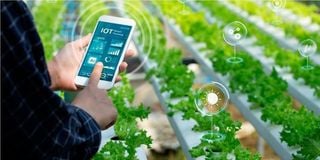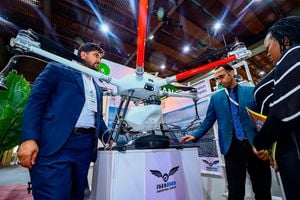
Agriculture and food security account for 49 per cent of all AI deployments in Kenya, report states.
Adoption of new-age technology Artificial Intelligence (AI) in Kenya is concentrated on the agriculture sector, with machine learning being used to provide local farmers with data-driven advice to help them optimise productivity, a new report has revealed.
The AI for Africa report, published by the Global System for Mobile Communications Association (GSMA), an association of mobile network operators, shows that agriculture and food security account for 49 per cent of all AI deployments, followed by climate action and energy use cases at 26 per cent and 24 per cent respectively.
According to the report launched on Tuesday, the vast majority of use cases fall under predictive AI, which the GSMA attributes to a number of factors, including the availability of historical data sets, ease of application, as well as lower computational requirements compared to generative AI models.
“The agritech sector is seeing most of the AI innovation in Kenya where agriculture continues to play a significant role in the economy. AI is already being used for agricultural advisory and for financial services with companies like Apollo Agriculture developing alternative credit assessment methods,” reads the report.
Microsoft's AI for Good Lab, for example, has developed a spatio-temporal machine learning model to help detect malnutrition hotspots, enabling timely intervention and targeted assistance, and ultimately mitigating the impact of malnutrition on vulnerable populations.
Increased investment in data centres by large technology companies and mobile network operators (MNOs) in the country was cited in the report as a key factor in driving momentum, bringing critical storage and computing capacity to the local level.
In the area of climate action, the use of AI in biodiversity monitoring and wildlife conservation has been prominent, driven largely by large tech companies such as AI for Good Lab and non-profit organisations such as Rainforest Connection.
However, the GSMA has identified critical infrastructure gaps and regular power outages as setbacks that entrench the digital divide and disproportionately affect low-income groups, the less educated and rural populations, noting that AI risks exacerbating existing socio-economic inequalities.
Another major barrier to AI adoption cited in the report is the high cost of hardware such as graphic processing units (GPUs) and cloud computing, especially for local entrepreneurs and researchers with limited financial resources.
GPUs and cloud computing systems are enablers that provide the storage capacity and computing power needed to process complex algorithms, analyse large data sets, and run advanced AI applications and models.
Also read: Digitising small-scale farming
According to the report, the price of a GPU in Kenya is equivalent to 75 per cent of GDP per capita, making it 31 times more expensive than in high-income countries.
“A significant skills gap also undermines the development of the AI ecosystem and use cases. While universities offer AI-related courses, they often fail to keep pace with industry needs, and students have limited opportunities for practical learning and hands-on experiences,” the association writes.
“There is also a disproportionate focus on core AI skills, such as machine learning and data science, with less emphasis on building the multidisciplinary skill sets needed to leverage AI to address pressing socioeconomic challenges.”
Locally, deep-tech startup Fastagger is developing software infrastructure that enables machine learning and AI models to run directly on edge devices, including low-cost smartphones.







